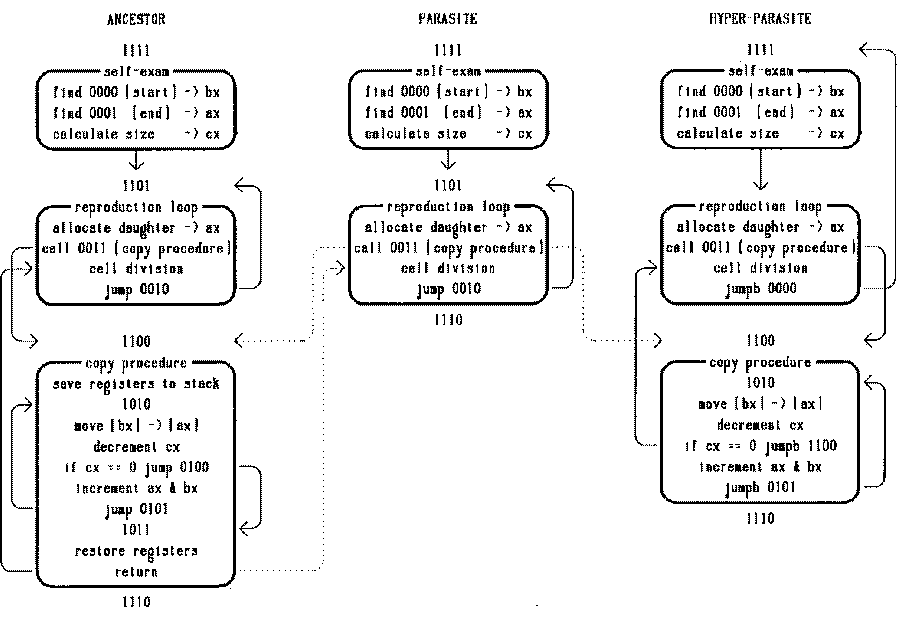
I have used the Tierran language to write a single self-replicating program
which is 80 instructions long. This program is referred to as the
``ancestor'', or alternatively as genotype 0080aaa (Fig. 1). The ancestor
is a minimal self-replicating algorithm which was originally written for use
during the debugging of the simulator. No functionality was designed into
the ancestor beyond the ability to self-replicate, nor was any specific
evolutionary potential designed in. The commented Tierran assembler and
machine code for this program is presented in Appendix C.

The ancestor examines itself to determine where in memory it begins and ends. The ancestor's beginning is marked with the four no-operation template: 1 1 1 1, and its ending is marked with 1 1 1 0. The ancestor locates its beginning with the five instructions: ADRB, NOP_0, NOP_0, NOP_0, NOP_0. This series of instructions causes the system to search backwards from the ADRB instruction for a template complementary to the four NOP_0 instructions, and to place the address of the complementary template (the beginning) in the ax register of the CPU (see Appendix A). A similar method is used to locate the end.
Having determined the address of its beginning and its end, it subtracts the two to calculate its size, and allocates a block of memory of this size for a daughter cell. It then calls the copy procedure which copies the entire genome into the daughter cell memory, one instruction at a time. The beginning of the copy procedure is marked by the four no-operation template: 1 1 0 0. Therefore the call to the copy procedure is accomplished with the five instructions: CALL, NOP_0, NOP_0, NOP_1, NOP_1.
When the genome has been copied, it executes the DIVIDE instruction, which causes the creature to lose write privileges on the daughter cell memory, and gives an instruction pointer to the daughter cell (it also enters the daughter cell into the slicer and reaper queues). After this first replication, the mother cell does not examine itself again; it proceeds directly to the allocation of another daughter cell, then the copy procedure is followed by cell division, in an endless loop.
Fourty-eight of the eighty instructions in the ancestor are no-operations. Groups of four no-operation instructions are used as complementary templates to mark twelve sites for internal addressing, so that the creature can locate its beginning and end, call the copy procedure, and mark addresses for loops and jumps in the code, etc. The functions of these templates are commented in the listing in Appendix C.